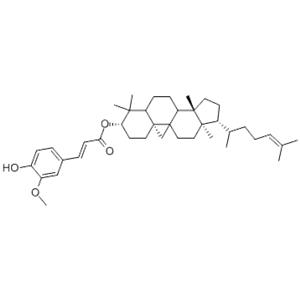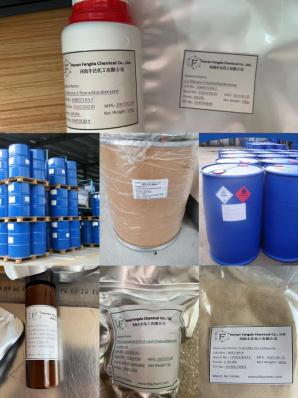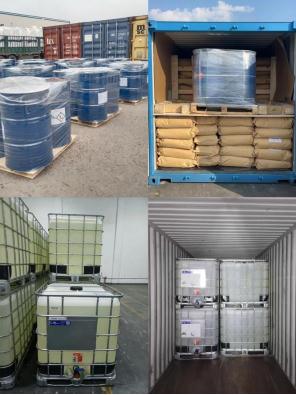| Description | γ-Oryzanol is a potent DNA methyltransferases (DNMTs) inhibitor in the striatum of mice. γ-Oryzanol significantly inhibits the activities of DNMT1 (IC50=3.2 μM), DNMT3a (IC50=22.3 μM). |
|---|
| Related Catalog | Signaling Pathways >> Epigenetics >> DNA Methyltransferase Research Areas >> Metabolic Disease |
|---|
| Target | DNMT1:3.2 μM (IC50) DNMT3A:22.3 μM (IC50) |
|---|
| In Vitro | γ-Oryzanol significantly inhibits the activities of DNMT1 (IC50=3.2 μM), DNMT 3a (IC50=22.3 μM) and DNMT 3b (maximum inhibition 57%). In contrast, the inhibitory activity of Ferulic acid, a metabolite of γ-Oryzanol, is much lower than that of γ-Oryzanol. Furthermore, γ-Oryzanol acts as a partial antagonist against ERRγ, which primarily serves as a positive regulator for DNMT1 production, and consequently decreased the activity of DNMT1[1]. |
|---|
| In Vivo | The brown rice-specific bioactive component γ-Oryzanol, a mixture of ferulic acid ester and several phytosterols, attenuates the preference for dietary fat via a decrease in hypothalamic endoplasmic reticulum (ER) stress. γ-Oryzanol ameliorates HFD-induced DNA hypermethylation of the promoter region of D2R in the striatum of mice. γ-Oryzanol might regulate levels of DNMTs in a striatum-specific manner. γ-Oryzanol partially decreases ERRγ activity (an approximately 40% reduction of the innate value). Oral administration of γ-Oryzanol to male mice by gavage significantly attenuates the preference for an HFD (93% of the values for vehicle-treated mice), resulting in an apparent attenuation of body weight gain[1]. |
|---|
| Kinase Assay | To assess the inhibitory activity of each compound on DNA methylation, the formation of S-adenosyl-l-homocysteine (SAH) is measured in the presence of each compound (20 μM for screening assays),S-adenosyl methionine (SAM; 10 μM) and DNMT substrate (4 ng/μL) at 37°C for 90 min. To evaluate the Michaelis-Menten kinetics, DNMT1 (20 μM) is incubated with γ-Oryzanol, SAM (5 μM) and the indicated concentration of poly dI-dC at 37°C for 90 min. DNMT3a (100 μM) and DNMT3b (100 μM) are incubated with γ-Oryzanol, SAM (5 μM) and the indicated concentration of poly dG•dC at 37°C for 120 min. The assays are performed in quadruplicate. Extracted protein (0.75 mg/mL) is incubated with SAM (5 μM), poly dI-dC (5 μg/mL), and poly dG•dC (5 μg/mL) at 40°C for 120 min, and SAH formation is measured[1]. |
|---|
| Animal Admin | Mice[1] Seven-week-old male C57BL/6J mice are used. To evaluate the preference for the HFD, γ-Oryzanol is administrated to 8-week-old mice by gavage during the food choice test. For the other experiments, an HFD containing 0.4% γ-Oryzanol is manufactured as pellets. After 12 weeks of feeding, tissue is collected from the striatum and hypothalamus. The daily intake of γ-Oryzanol, estimated from the mean food intake of the mice, is approximately 320 μg/g body weight. The doses of γ-Oryzanol are determined. |
|---|
| References | [1]. Kozuka C, et al. Impact of brown rice-specific γ-oryzanol on epigenetic modulation of dopamine D2 receptors in brain striatum in high-fat-diet-induced obesity in mice. Diabetologia. 2017 Aug;60(8):1502-1511. |
|---|

 China
China






